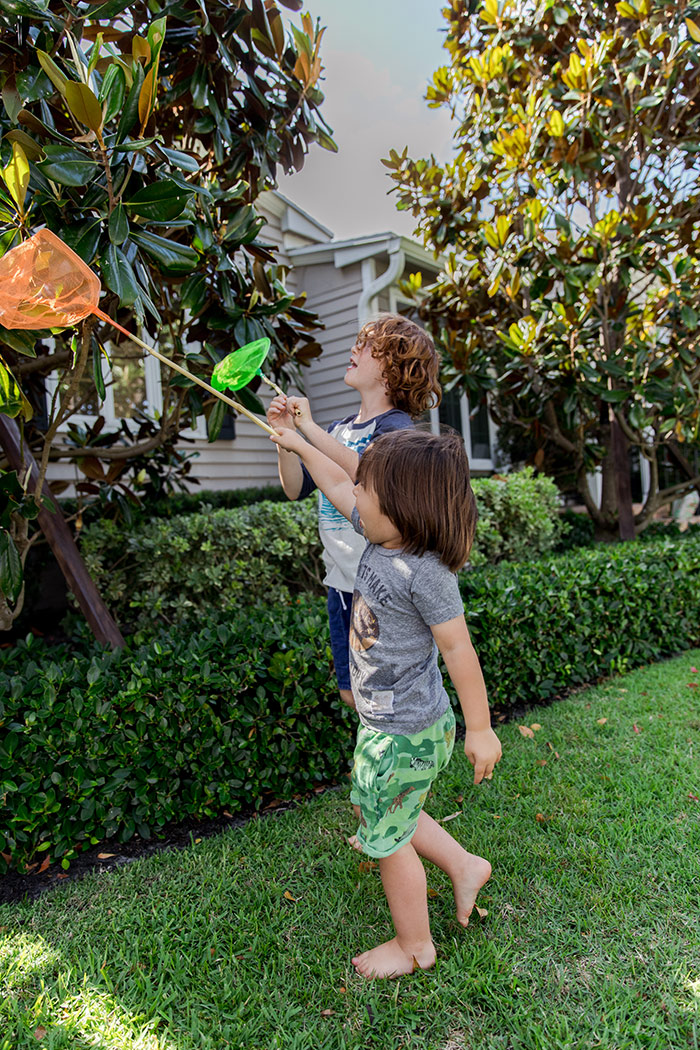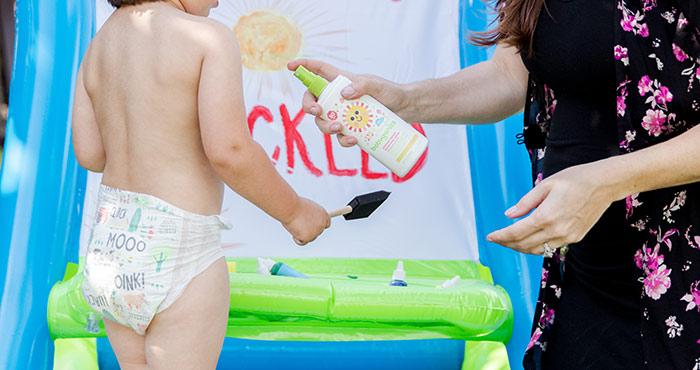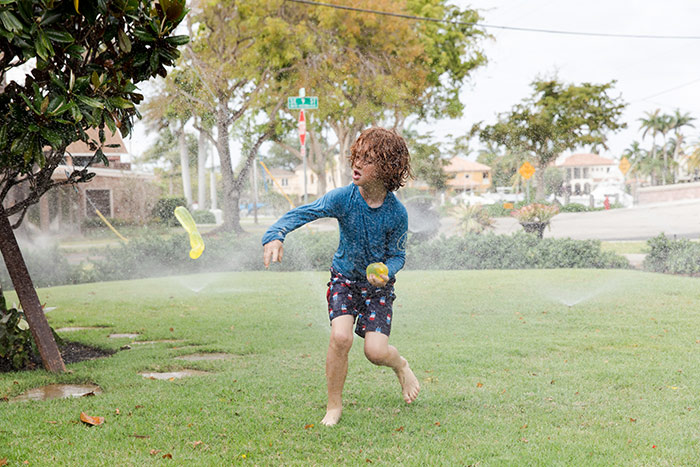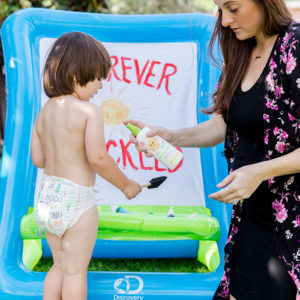Creating the Ultimate Summer First Aid Kit
The best way to prevent a raincheck for your great adventure is to prepare ahead of time. In the chaos of packing and preparing, the first aid kit can often slip through the cracks. But tummy aches, bee stings, allergic reactions, or even bumps and bruises are some of the quickest ways to ruin a perfectly planned day or vacation. A first aid kit is essential and is something super easy to make yourself to keep in the car. So make sure you keep summer first aid kit essentials on hand. And use these pointers to make sure your kids are ready for all your summer adventures.
1. Relieving Tummy Troubles
Summer is all about friends and family and enjoying adventures away from home. But getting out of the routine of school and home life can cause some tummy issues for the little ones. We don’t always think about how foods on the go will affect our children’s stomachs. Diarrhea, constipation, and gas are all common ailments when summer adventures take your kids away from their normal eating habits.
Gas, in particular, can be incredibly painful, sending many parents to the emergency room worried about the sharp and persistent nature of their child’s belly pain. These pains occur when gas gets trapped or doesn’t move well through your child’s digestive system.
Many tummy aches in kids can be treated at home. If you think your child is suffering from gas pain, try Children’s Mylicon. This over-the-counter (OTC) medication is safe and effective for children ages 2-11. It works directly in the digestive tract by breaking down the surface of gas bubbles.
If you’ve tried Mylicon, but your child’s pain continues, you should have them evaluated by a doctor.![]()
2. Preventing and Relieving Bug Bites
Bugs bites are not only a nuisance, but in rare instances, can lead to severe allergic reactions and skin infections. The U.S. Centers for Disease Control and Prevention (CDC) reported that illnesses from mosquitoes, ticks, and fleas have tripled in the U.S. since 2004.
Here are some great summer tips for keeping bug bites at bay:
- Don’t use bug repellent on young infants.
- Only apply to healthy skin and on the outside of clothes.
- Apply bug spray 15-20 minutes before going outdoors.
- Avoid using fragrant sprays and shampoos as they can actually attract bugs.
Sometimes no matter how well we protect our children, bug bites still happen. Most bug bites will cause local redness, itching, and discomfort. An OTC cream or antihistamine is usually all you need to alleviate the symptoms, so make sure to pack these essentials in your first aid kit!
However, if your child is experiencing difficulty breathing or facial swelling, it is important to have them evaluated immediately. If your child has a known allergy to bug bites, it is imperative that you travel with their EpiPen.
3. Preventing Sunburns
There isn’t anything more peaceful than a day at the beach. The sun on your face, salt in your hair, and sounds of your children happy and playing. However, providing proper sun protection is as important as having your child wear a seatbelt in the car or a helmet while riding a bike. Your child getting a sunburn, just even once every 2 years, can triple their risk of melanoma skin cancer.
Broad spectrum sunscreen with an SPF of at least 30 is an excellent addition to your first aid kit essentials!
4. Treating Scrapes and Bruises
Great adventures don’t come without war wounds! With outdoor fun, there is always a chance of a skinned knee or minor cuts. Although most of the time our little ones just need a quick kiss and reassurance, it is important to have the right tools to clean out the wound and protect it against infection.
- Clean out the cut with fresh water, removing any gravel or dirt that may be there.
- Apply an OTC antibiotic cream to prevent infection.
- Protect the cut with an adhesive bandage, especially if you are going to spend the rest of the day outside.

5. Removing Splinters and Foreign Bodies
Splinters and other foreign bodies can cause a lot of anxiety for children and parents alike. If your child has a splinter that appears to be relatively easy to get out, make sure to wash the area with soap and water and remove the splinter using tweezers. Clean the tweezers with an alcohol swab before use. Once the splinter is out, apply antibiotic cream and protect the wound with an adhesive bandage.
If your child has stepped on a piece of glass or has a foreign body that is more complicated (i.e. a fish hook), it is best to have a pediatrician remove it and wash the wound appropriately. With any of these foreign bodies, it is important to make sure your child is up-to-date on their tetanus shot.
6. Treating Sprains
Sprains can actually be very painful and difficult to treat away from home. If your child is suffering from extreme pain and swelling, it is best to have him or her evaluated by a doctor promptly.
However, if it appears like a minor sprain, support the sprain with an elastic bandage, and give them a pain reducer, if age appropriate. In medicine, we use the mnemonic R.I.C.E. to help others remember the common treatments for sprains: REST, ICE, CONTROL PAIN, ELEVATE.
7. Managing Fever and Pain
Both ibuprofen (Motrin) and acetaminophen (Tylenol) can and should be used to treat fever and pain. Motrin is a medication that can only be given every six hours. If you give Motrin and three hours later your child still has a fever, you can definitely give Tylenol. Both medications can and should be used to control fever. With a high fever, it is best to alternate Tylenol and Motrin every 3 hours.
However, with sprains, I prefer NSAIDS, like Motrin, because this type of medication helps combat inflammation due to injury as well. There are certain restrictions to using Motrin, though, such as the recommended age for use, so it is important to consult your pediatrician for proper dosing.
Final Thoughts on Summer First Aid Kit Essentials
Having first aid kit essentials in your stroller or car can save you a frantic ride to urgent care or your local drug store. You can purchase most of the items you need at the dollar store. Here’s a quick rundown of the items you should include:
- Children’s Mylicon
- Bug spray
- Hydrocortisone cream
- Children’s oral antihistamine
- Sunblock
- Antibiotic cream
- Adhesive bandages
- Tweezers
- Alcohol swabs
- Cold packs
- Elastic bandages
- Fever/pain reducers
I hope these tips help keep your kids exploring and smiling all summer long!


